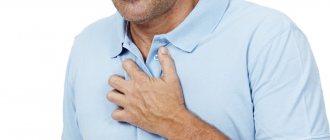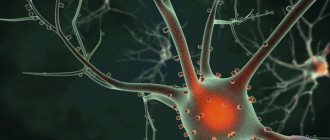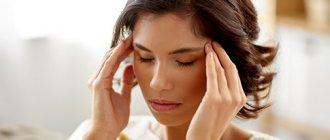- High results, no side effects
- Treatment without pills and surgeries
- Initial consultation with a doctor is FREE
Tibetan medicine considers vegetative-vascular dystonia as a disorder of the Wind system. It is responsible for nervous regulation and the cardiovascular system. Therefore, the symptoms of VSD are associated primarily with vascular and nervous (autonomic) disorders.
For disorders of the Wind system, Tibetan medicine recommends oily, sweet foods. This means that it is better to forget about low-calorie diets based on raw vegetables, herbs and fruits. These products have a cooling effect, and the Wind system has the nature of cold. Therefore, they aggravate the symptoms of vegetative-vascular disorder and add new ones to them - insomnia, irritability, anxiety. Low-calorie diets and raw food diets for VSD can provoke the development of neuroses or mental disorders, as well as complications in the form of panic attacks.
Fats
Oily foods are foods that are high in fat. But not all fats are equally beneficial for VSD. The best butter is ghee. This is a universally useful product for any disorders of the Wind system, so it should take a leading place in the diet. Butter is less healthy. Sunflower and sesame oils warm, so they are completely acceptable. Olive is cooling, but good for the nervous system. But it is better to exclude corn and rapeseed oils.
Blood vessels are connected not only with the Wind system, but also with the Mucus system, and it does not like animal fats. Therefore, they should be consumed with caution (although fatty meat is not prohibited). And under no circumstances should you drink animal fats with chilled drinks.
Vegetables
Most vegetables have a sweet taste and are generally useful for VSD, but only after heat treatment and with the addition of ghee. These are primarily carrots, pumpkins, and potatoes.
The best oily product for VSD is fatty fish. Any, but especially sea. It could be salmon, mackerel or herring. You need to eat oily fish regularly. It warms (useful for Wind, Mucus), has a sweet taste and is ideal for nutrition in case of vegetative-vascular dystonia in any form - boiled, stewed, baked, fried. But not in dried form, since dry, light foods are harmful to the Wind.
Cereals
Buckwheat is light and cold, so it is not the best choice of cereals for VSD. The best choice would be oatmeal. Even millet porridge is preferable to buckwheat. However, buckwheat can be well seasoned with melted butter and warming foods can be added to it - fried onions, mushrooms, boiled eggs, pepper. In this case, you will get a useful product.
Rice is also a useful cereal. It has a neutral effect, but harmonizes the body's systems and has a positive effect on vegetative-vascular disorders. You can safely use it, in any quantity, but don’t forget to flavor it well with melted butter! Dry, hard, undercooked rice without oil is harmful for VSD.
Vegetovascular dystonia (VSD)
Vegetovascular dystonia (VSD) is one of the most common human diseases. According to modern statistics, more than 40% of adults and children have symptoms of vegetative dystonia.
Many people wonder what is vegetative-vascular dystonia? VSD is not a disease, but a collection of various syndromes associated with disruption of the central nervous system. VSD has the features of various diseases: psychological, neurological, cardiological, vascular, manifested by dizziness, increased sweating, rapid or slow heartbeat, difficulty breathing, sleep disturbance, unpleasant sensations in the limbs, fatigue, and weather sensitivity.
If you find yourself with signs of VSD, then you should not immediately self-medicate, but you should consult a doctor to rule out organic pathology, which may worsen with prolonged self-medication. Do not forget to contact your doctor once a year for an examination and take all necessary tests for early diagnosis of diseases and their prevention.
Research shows that no significant changes in the body have been identified during VSD, as well as structural disorders in the brain. But the person feels bad at the same time. In the course of various tests, it was found that with VSD, the delicate balance between the most important parts of the autonomic nervous system: sympathetic and parasympathetic is disrupted. In other words, with dystonia, a person’s blood vessels begin to respond inadequately to internal and external stimuli. As if for no reason at all, a person begins to feel dizzy and dizzy, his hands become sweaty, his heartbeat quickens, and he begins to feel short of breath. Thus, all symptoms are based on imbalance and disharmony of internal physical and biochemical processes.
Risk factors for VSD are:
- hormonal changes in the body;
- chronic stress and neuroses;
- overwork due to physical or emotional stress;
- alcohol abuse;
- severe and chronic diseases;
- consequences of injuries, infections, intoxications;
- disruption of the endocrine system.
Vegetovascular dystonia occurs in people of any age. In children, vegetative-vascular dystonia is often associated with a genetic predisposition. Vegetative-vascular dystonia in adolescents is usually caused by a mismatch in physical development and the degree of maturity of the nervous system. In general, as studies show, women are more often susceptible to vegetative-vascular dystonia syndrome after 25-30 years, men - after 40-45 years.
VSD can manifest itself in different ways, sometimes as single symptoms, sometimes as whole groups. Depending on the disturbances in the activity of one or another system of organs of manifestation
VSD is divided into several types:
- cardiac (heart) manifestations - pain in the heart area, rapid heartbeat (tachycardia), a feeling of a sinking heart, interruptions in heart function;
- respiratory (breathing) manifestations - rapid breathing, inability to take a deep breath, feeling of lack of air, feeling of heaviness, congestion in the chest; sudden attacks of shortness of breath;
- dysdynamic manifestations - fluctuations in arterial and venous pressure, disturbances in blood circulation in tissues; thermoregulatory manifestations - sharp, inexplicable fluctuations in body temperature - from 38 to 35 and below, and vice versa;
- dyspeptic manifestations - disorders of the gastrointestinal tract (abdominal pain, nausea, vomiting, belching, constipation or diarrhea);
- sexual disorders, for example, anorgasmia - lack of orgasm with persistent sexual desire;
- various dysfunctions of the urinary system - frequent, painful urination;
- psychoneurological manifestations - weakness, lethargy, decreased performance and increased fatigue, tearfulness, irritability, headaches, dizziness, weather sensitivity, disturbances in circadian cycles (sleep-wake), anxiety, shuddering during sleep.
Vegetative attacks (vegetative-vascular crises, panic attacks) usually make themselves felt at a fairly young age (20-40 years), mainly women suffer from VSD. If the activity of the sympathetic department predominates in the work of the ANS, then a sympathoadrenal attack (crisis) occurs, usually starting with a headache or pain in the heart, palpitations, redness or pallor of the face. The crisis is accompanied by an increase in blood pressure and body temperature, increased heart rate, chills, and in some cases, an attack of causeless fear.
Diagnosing VSD is not difficult. It can be carried out by the patient himself based on a number of simple signs - sudden pallor or, conversely, redness of the skin, especially on the face, frequent dizziness, darkening of the eyes, especially after sudden movements or standing up. There is a headache, mostly of a paroxysmal nature. Patients note increased sweating, rapid or slow heartbeat, interruptions in heart function, difficulty breathing, coldness or numbness in the arms and legs, and frequent feelings of weakness and weakness.
For a medical specialist, diagnosing VSD, on the contrary, is difficult, because its symptoms are varied and can be easily confused due to the similarity of the clinical picture with other neurological diseases. To diagnose VSD, electrocardiography (ECG), daily recording of an electrocardiogram, is used. To study the nervous system, electroencephalography is performed - a method of graphically recording bioelectrical impulses of the brain, computed tomography. Based on the results obtained, the doctor, relying on the examination data, as well as the patient’s complaints and the characteristic clinical picture of manifestations, makes a final diagnosis and develops a treatment regimen.
Of course, the ideal option is to prevent and treat VSD at a young age, when the first symptoms of the disease appear. It is a very common belief that VSD is a temporary condition, often observed during the development of a young organism, and will pass over time. Unfortunately, this opinion is erroneous - it has been proven that VSD that occurs in childhood or adolescence is an unfavorable background and a harbinger of many diseases.
In adults, the presence of symptoms of VSD requires, first of all, the exclusion of various diseases, the course of which is accompanied by dysfunction of the nervous system - endocrine pathologies (diseases of the thyroid gland, adrenal glands, sexual dysfunctions), various mental disorders (from neurosis, neurasthenia to diseases caused by significant changes in brain structures). Many chronic diseases are accompanied by manifestations of VSD, so in any case, an urgent visit to a doctor is simply necessary.
Treatment of VSD , of course, is individual, but the program always includes three mandatory stages: identification and elimination of the main cause of the disease, basic treatment and non-drug therapy, which rather has a rehabilitation and preventive value. Swimming and running are recommended for everyone, regardless of age, they are one of the most useful sports because they involve long-term and uniform load on all muscles, this also includes skiing, cycling, etc.
Proper balanced nutrition also plays a role. The diet should always include cereals, vegetables, herbs, fruits, less fat, and sugar. All this has a beneficial effect on metabolism. Fish is healthy, but meat should not be the main food product. Alcohol, with frequent and increased consumption, can lead to an imbalance in the nervous system and become one of the manifestations of the symptoms of VSD.
For relaxation and stress relief at the end of the day, it is advisable to take baths with a small amount of essential oils (thyme, pine, spruce, fir, rosemary, rose, etc.). A contrast shower will be an excellent way to train blood vessels. You need to monitor the time of work and rest, maintain a sleep schedule, try to avoid overwork and overexertion, i.e. everything that can lead to VSD. A child should play sports from early childhood; it is advisable to exempt him from physical education only as a last resort.
Drug treatment is carried out only under the supervision of a doctor - there are no “magic pills” for VSD. Treatment of VSD is complex and necessarily includes potassium and calcium supplements, vitamin and mineral complexes, vascular drugs, nootropics (drugs that improve nutrition, metabolism and the functioning of brain cells), antidepressants. Treatment of vegetative-vascular dystonia depends on the severity of the disease. As a rule, this treatment is complex and includes physiotherapy, herbal medicine, psychotherapy, and, if necessary, consultation with a chiropractor or acupuncturist.
If you discover signs of VSD, then you should not immediately self-medicate, but you should consult a doctor to rule out organic pathology, which may worsen with prolonged self-medication. Don’t forget to contact your doctor once a year for an examination and all the necessary tests for early diagnosis of the disease and its prevention.
Spices
Pepper and other spices - cinnamon, ginger, turmeric, allspice, nutmeg, cloves are very useful for Wind disorders. If you have symptoms of VSD, they must be included in your daily diet. A combination of garlic, hot chili pepper and ghee gives a good therapeutic and prophylactic effect. For greens, it is better to use dill and cilantro.
In general, Tibetan medicine recommends any warming products for VSD - poultry (chicken, goose, duck, turkey), lamb, liver, egg yolks, nuts (walnuts, pine, cashews).
How to use class=”aligncenter” width=”992″ height=”247″[/img]
or call +7 Moscow
Free consultation Survey, examination, pulse diagnostics from 30 minutes
Diagnostics Ultrasound, MRI, Laboratory tests (as prescribed)
Treatment Individual plan
Treatment
Treatment of vegetative-vascular dystonia should begin with the organization of the correct daily routine and a set of restorative measures, which, if used regularly, give an excellent therapeutic and healing effect: The duration of continuous night sleep should be at least 8-9 hours, in addition, it is advisable to rest, if possible, several hours during the day. Physical activity should be regular and moderate, until you feel slightly tired, especially with high blood pressure (above 140/90 mm Hg). Swimming, cycling, light running (excluding jumping), walking, aerobics, and skiing are useful. Massage of the head, collar area and back, in the absence of contraindications and after consultation with a doctor, gives a good therapeutic effect. Daily contrast showers and exposure to sunlight (phototherapy) are very useful. Nutrition for VSD should be balanced and contain the physiologically necessary amount of fats, carbohydrates, proteins, vitamins and microelements; potassium and magnesium are especially necessary in the diet. Potassium is found in tomatoes, potatoes, cabbage, green peas, beets, eggplants, beans, sorrel, dill, rhubarb, apricots, prunes, figs, and raisins. Sources of magnesium can be nuts, beans, soybeans, carrots, rose hips and whole grain porridges (buckwheat, oatmeal, wheat). Salty, spicy, smoked dishes, strong tea, coffee, chocolate should be excluded from the menu as much as possible, and animal fats should be replaced with vegetable fats. If normalization of the regime and nutrition do not give the desired effect, doctors have many modern effective drugs in their arsenal:
- antihypertensive drugs (lowering blood pressure),
- beta blockers (for tachycardia),
- neuroprotectors (activators of brain metabolism),
- antioxidants (protect cells from oxidation and destruction),
- drugs to improve blood circulation,
- tranquilizers (having a calming effect),
- Antidepressants to help relieve depression and anxiety.
If the causes of dystonia are psychological disorders (stress, depression, chronic fatigue, neurosis, overwork), in addition to medications, it is advisable to visit a professional psychotherapist who, using established techniques such as hypnotherapy or behavioral therapy, will help get rid of fears, panic attacks and phobias and provide the necessary psychological assistance.








